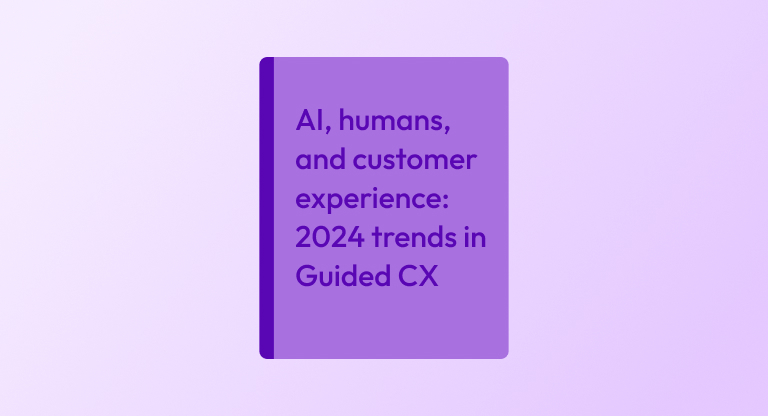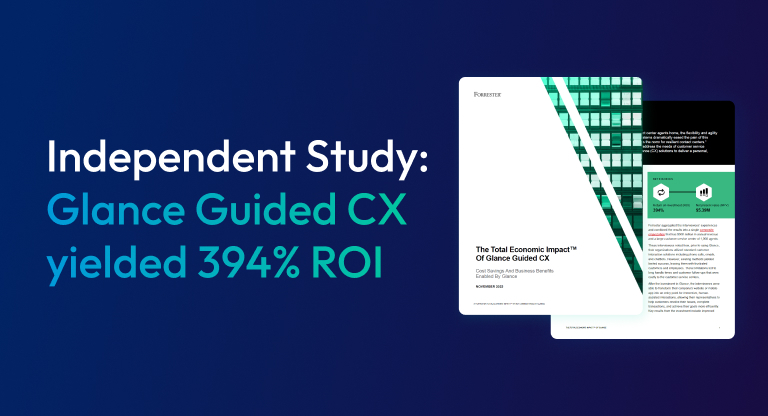Google “Average Handle Time” and you’ll be pointed in the direction of innumerable articles that describe what this metric is – and advise you to reduce it.
And, once upon a time, that would have been more or less the only advice a contact center needed on the subject of Average Handle Time.
But not anymore. Because while the essential meaning of AHT hasn’t changed, the context it exists in has.
Which means the way you use AHT as a metric has changed. It’s no longer the shining measure of support quality it once was – but there’s still a way to use it to your benefit.
This article should help you do that.
We’ll tell you what Average Handle Time is, why it’s a less important efficiency metric than it used to be, what’s replaced it as the most important metric for measuring customer satisfaction, and how you can use it as an engagement metric to help drive better CX.
What is Average Handle Time (AHT)?
Average Handle Time (AHT) measures the average duration of a call center interaction.
To calculate AHT, you need to add up the:
- Total call time (from when the customer initiates a call to when the call is completed)
- Hold and transfer time (more or less self-explanatory)
- After-call time (the time it takes for service rep/s to complete the after-call work)
… for all the calls you get over a given period. You’ll then divide that time by the total number of calls.
Simple enough, right?
That’s the basic definition you’ll find on most guides to AHT.
And while that calculation isn’t inaccurate, it does come with a sizable asterisk …
Because in a world of proliferating support channels (like chatbots, IVRs and self-service portals), the time it takes to “handle” a customer’s problem is becoming less and less reflective of how effective that support actually is.
Why is Average Handle Time important?
Now here’s where we get really controversial: it isn’t important.
Or at least, it isn’t important in the same way that it used to be.
Historically speaking, AHT has been used as an efficiency metric. It’s provided call centers with an indication of how efficiently their reps are dealing with customer calls.
And because it’s been treated as an efficiency metric, the goal has been to minimize AHT.
The logic is easy to understand: the shorter the average call, the more throughput is being handled, and the more calls the call center can take, right?
And so the goal for reps being measured against AHT has been to get customers off the phone ASAP.
Back when customer inquiries were simple, this goal made sense – and AHT was a good yardstick for measuring customer satisfaction. Customers wanted an answer ASAP, and so the quicker (on average) a call was, the better.
But things have changed. The companies leading in CX and customer satisfaction have handed off simple customer inquiries to automated systems (e.g. chatbots/IVRs) and self-service pages and portals.
Their customer service reps are no longer dealing with “average” problems – they’re solving complex, multi-stage and personal issues. Under this new model, a metric like First Call Resolution (FCR) gives a better indication of the quality of a call than AHT.
What’s more, both service reps and customers are increasingly jumping onto third-party meeting and screen sharing apps (which, incidentally, don’t all automatically track interaction lengths), which potentially further undermines the value of AHT as a metric.
What’s a good Average Handle Time?
The truth is that there’s never really been a magic benchmark number for AHT.
After all, what a “good” AHT looks has always depended on numerous factors, such as the industry you belong to, the size of your contact center.
But now more than ever, a “good” AHT could look completely different depending on what your goals are. And in the modern, CX and engagement focused call center, a high AHT could actually be what you’re looking for.
A happy customer is (often) a chatty customer, and a long conversation that pushes your AHT up could be a friendly chat that increases the customer’s CLTV in the long run.
It could also be a conversation in which your rep has solved the customer’s issue quickly and the customer has been to ask about any other issues they might have.
And a conversation might last even longer if your service rep capitalizes on a customer’s happiness to offer them upgrades and other products and services. (Upselling is a lot more low friction when the company has already helped you.)
Given all this, you might start to see AHT as less of an efficiency metric and more of an engagement metric.
How can I use AHT to improve my company’s CX?
This is tricky, because – as we’ve just pointed out – AHT can be read in more than one way.
- A low AHT could indicate a great CX, in which customers are having their simple issues resolved quickly and reps are helping more customers per hour/day/week.
- A low AHT could indicate a horrible CX, in which customers are having terse, abruptly ended and low-value interactions with reps that aren’t solving their complex issues – and aren’t triggering follow-up conversations, questions and upselling opportunities.
So the way you apply AHT depends on what you’re aiming to achieve in the call center – and how the call center fits into your wider customer experience.
Here’s 5 questions you can ask yourself when thinking about how to apply AHT to your CX:
- What kind of inquiries are our customer service reps dealing with – are they simple or complex?
- Should our AHT only measure call center interactions, or also incorporate other modalities within the customer journey (e.g. chatbots, IVRs)?
- What (generally speaking) is the outcome we want rep-to-customer interactions to achieve?
- What other levers are we pulling within our CX journey to improve customer satisfaction – and how do these relate to AHT?
- Are my reps using third party tools which might both increase AHT and make it hard to capture/track real AHT?
If reducing AHT is no longer the goal, is the speed of calls now irrelevant?
Absolutely not.
Improving your call center CX might no longer be all about decreasing your Average Handle Time (if it ever was), but it’s still extremely important to decrease unnecessary call-time wherever you can.
While customers might be happy to chat with a service rep – and even discuss upsell options – once they’ve had their issue (or issues) resolved, until that time the rep is very much on the clock.
A potent way to speed issue resolution up is to remove the visual barrier that exists between customers with the sort of complex, browser-based problems call centers are increasingly dealing with and the service reps who are trying to solve them.
And that’s where Glance Guided CX solutions could come in very handy.
Once your service reps are able to see what the customer is seeing, in real-time, and to guide them visually within your web or app browser to a solution, they can dispense with asking endless questions regarding what the customer can see and long-winded explanations of where the customer should click.
And while this might not necessarily reduce Average Handling Time (since such technology will enable them to solve multiple issues at once) it will almost certainly cause a big uptick in First Call Resolution (FCR) – which, as our article on FCR suggests, is a rather more reliable indicator of the effectiveness of your call center than AHT.
To find out how Glance makes rep-to-customer interactions more efficient and high-value, check out more on our solutions.





